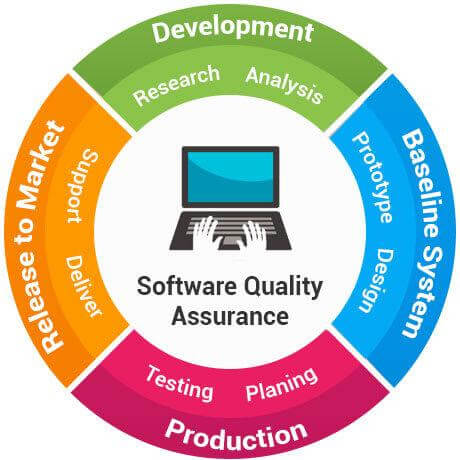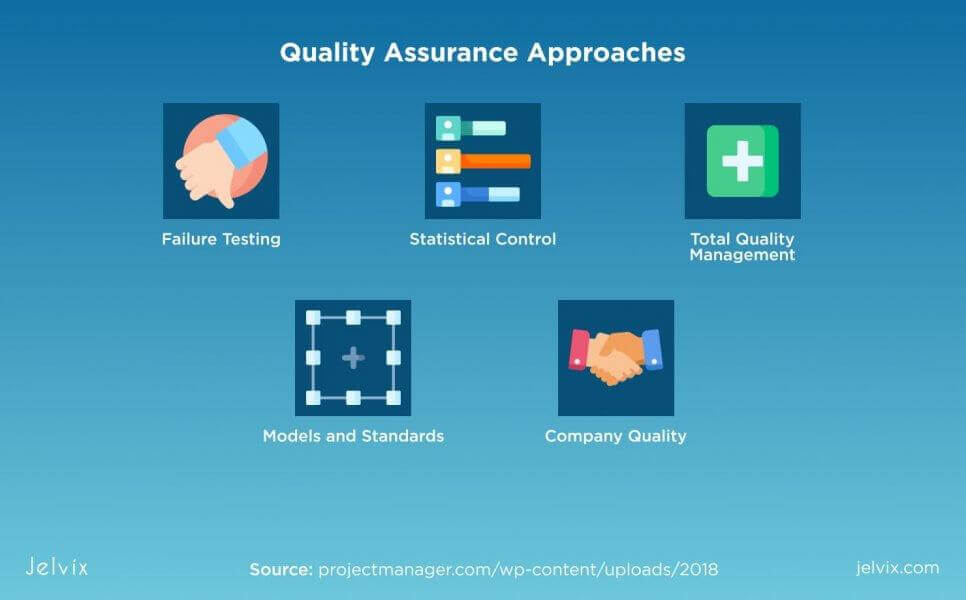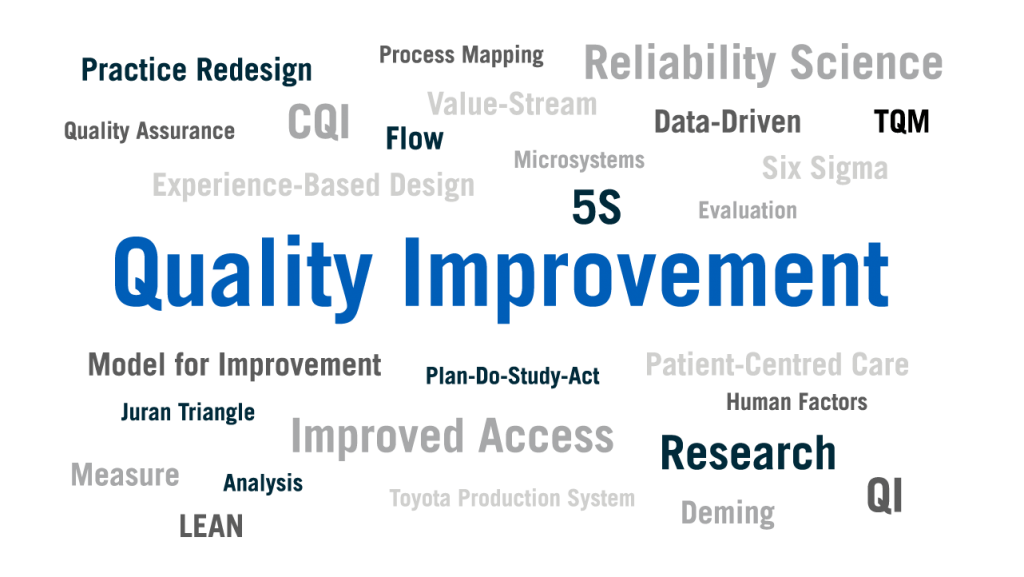
Quality improvement, and quality assurance – aren’t they synonyms? Well, they are two crucial aspects of any business, yet often confused with one another. While quality assurance focuses on preventing defects and ensuring consistency in processes, quality improvement seeks to identify areas for growth and increase efficiency. Did you know that a recent survey found that only 43% of businesses prioritize quality improvement over quality assurance? In this article, we will explore the key differences between these two approaches and provide insights on how to implement both for maximum success. So, buckle up and get ready to elevate your quality game!
Quality assurance is a systematic approach to ensuring that products or services meet specific standards. It is an essential aspect of any business aiming to deliver customers high-quality products or services. Quality assurance process improvement is often used in manufacturing, construction, healthcare, software development, and other industries where consistency and reliability are critical. (Image 1)

In QA, a set of processes and procedures is established to prevent defects or mistakes in the production or delivery of goods or services. These processes are designed to ensure that the final product meets a specific set of quality criteria, as defined by the business or industry standards. Its goal is to ensure that the product or service is delivered consistently, with minimal variation in quality and performance.
One of the main reasons why QA is essential is that it helps businesses minimize defects and rework, which can be costly and time-consuming. By establishing processes and procedures that prevent defects in the first place, businesses can save time and money, and improve customer satisfaction. In addition, quality assurance helps businesses identify and address potential issues before they become major problems. This can help reduce the risk of recalls, warranty claims, and other costly consequences.
Another reason why quality assurance is crucial is that it allows businesses to comply with regulatory requirements and industry standards. Healthcare world has tons of quality standards that businesses must meet to operate legally and compete effectively. By implementing QA processes, businesses can ensure that they meet these standards and avoid penalties or legal consequences.
Quality assurance improvement is also essential in the tech industry, where software development and digital products are becoming increasingly complex. In software development, quality assurance helps identify and address potential bugs and defects before they are released to customers. This can help improve the UE and prevent negative feedback. Moreover, QA assurance can help businesses ensure that their software products are secure and reliable.
QA responsibilities of a team is defined by the areas that need to be focused on like research, prototype, testing, etc. (Image 2)

To implement QA in a business, it is essential to establish a set of processes and procedures that define how quality is measured and maintained. This may include defining quality standards, creating a testing and inspection plan, and establishing a process for tracking and reporting quality metrics. In addition, businesses may need to invest in training and development programs to ensure that employees understand their role in maintaining quality standards and can contribute to ongoing quality improvement efforts.
The following image shows where QA tools are mostly applied:

Implementing Quality Assurance (QA) tools can bring numerous benefits to healthcare businesses.
In conclusion, QA is a critical aspect of any business that aims to deliver high-quality products or services consistently. It helps businesses minimize defects, comply with regulatory requirements, and meet industry standards. QA is particularly essential in the tech industry, where software development and digital products are becoming increasingly complex.
With software from ZenBit!

Quality improvement is a continuous effort to identify and address areas for growth and improvement in a business’s products, processes, or services. It involves a systematic approach to analyzing and optimizing business operations to enhance quality, reduce costs, and improve customer satisfaction. QI is an essential aspect of any business that aims to stay competitive and meet the evolving needs and expectations of its customers.
The goal of QI is to identify opportunities for improvement and to develop and implement strategies to address them. This may involve analyzing data, collecting feedback from customers or employees, and using benchmarking and best practices to develop new processes and procedures. QI efforts can lead to increased efficiency, improved product performance, and better customer satisfaction.
One of the main reasons why QI is essential is that it helps businesses stay competitive and meet the changing needs of their customers. In today’s fast-paced business environment, customers expect high-quality products and services that are delivered quickly and efficiently. By continuously analyzing and optimizing business processes, businesses can stay ahead of the curve and remain relevant in their industry.
QI tools are also essential for businesses that want to reduce costs and improve their bottom line. By identifying areas for improvement and implementing new processes and procedures, businesses can eliminate waste, reduce defects, and improve efficiency. This can lead to significant cost savings and increased profitability.
In addition, QI can help businesses comply with regulatory requirements and industry standards. Many industries have specific quality standards that businesses must meet to operate legally and compete effectively. By implementing QI processes, businesses can ensure that they meet these standards and avoid penalties or legal consequences.
Technology plays an important role in quality improvement efforts. Many businesses use software tools to collect and analyze data, track performance metrics, and automate quality control processes. For example, businesses can use automated testing tools to identify defects in software products or use data analysis software to identify patterns and trends in customer feedback. By using technology to optimize quality improvement efforts, businesses can increase efficiency, reduce errors, and improve their bottom line.
To implement quality improvement in a business, it is essential to establish a standard of continuous improvement. This may involve training and development programs to ensure that employees understand their role in quality improvement efforts and can contribute to ongoing improvement initiatives. In addition, businesses may need to invest in data analysis tools, software automation, or other technologies to support quality improvement efforts. (Image 4)

Introducing Quality Improvement (QI) tools can bring numerous benefits to your healthcare business. We chose the following key ones:
All in all, quality improvement is a critical aspect of any business that aims to stay competitive and meet the changing needs and expectations of its customers. It helps businesses identify areas for improvement and develop strategies to optimize quality, reduce costs, and improve customer satisfaction.
Quality assurance (QA) and quality improvement (QI) software are two distinct types of software tools used in healthcare to improve the quality of patient care. Here are the differences between QA and QI software:
The purpose of QA software is to ensure that established standards and guidelines are being followed to maintain quality, whereas the purpose of QI software is to identify areas for improvement and implement strategies to improve patient outcomes.
QA tools, for instance, can be used in audits, peer review, quality indicators, etc.
As for the QI tools, we will mention the following:
QA software focuses on detecting and preventing errors before they occur, while QI software focuses on identifying and correcting errors that have already occurred.
Examples of Quality Assurance (QA) software in healthcare:
As for QI software, we would like to mention the following:
QA software is typically used to monitor and ensure that quality standards are being met on an ongoing basis, while QI software is used to analyze data and identify opportunities for improvement, which can then be implemented over time.
QA software, such as EHR and CDS software, is used on an ongoing basis to ensure that quality standards are being met consistently and in real-time. QI software, such as PSRS and QMS software, is used to analyze data over time to identify trends and opportunities for improvement, which can then be implemented gradually over a period of weeks or months. This allows healthcare providers to test new processes and measure their effectiveness before making them permanent changes.
QA software often uses checklists, audits, and reviews to ensure compliance with established standards, while QI software uses data analysis, measurement, and process improvement methodologies, such as Lean or Six Sigma.
For example, a QA software tool may use audits to ensure that medications are being prescribed and administered correctly, while a QI software tool may use data analysis and measurement to identify patterns and trends in medication errors and implement process improvements to prevent them in the future. Additionally, QA software tools may use reviews of patient records to identify missing or incomplete information, while QI software tools may use root cause analysis to investigate the underlying causes of errors and develop targeted solutions to prevent them from recurring.
The primary outcome of QA software is compliance with established standards, while the primary outcome of QI software is improved patient outcomes and quality of care.
For example, the primary outcome of QA software may be ensuring that healthcare providers follow proper protocols for hand hygiene to prevent the spread of infections, while the primary outcome of QI software may be reducing the rate of hospital-acquired infections, which would improve patient outcomes and overall quality of care. Plus, while the primary outcome of QA software is generally focused on preventing errors and maintaining compliance with established standards, the primary outcome of QI software is often focused on identifying areas for improvement and implementing changes that result in better patient outcomes and quality of care.
QA software tools may focus on monitoring certain quality indicators, while QI software tools are designed to analyze data on a much larger scale to identify trends and patterns that can lead to process improvements.
For example, QA software tools may monitor quality indicators such as medication error rates or patient falls, while QI software tools may analyze data on a larger scale, such as hospital-wide readmission rates, to identify common causes and opportunities for improvement that could lead to better patient outcomes and quality of care. Also, QA software tools may use data analysis to identify specific areas of noncompliance with established standards, while QI software tools may use advanced analytics and machine learning to uncover patterns and insights that may not be immediately apparent, and use this information to drive meaningful change and improvement.
Here is a visual QA/QI comparison exapmle of measuring clinical performance.